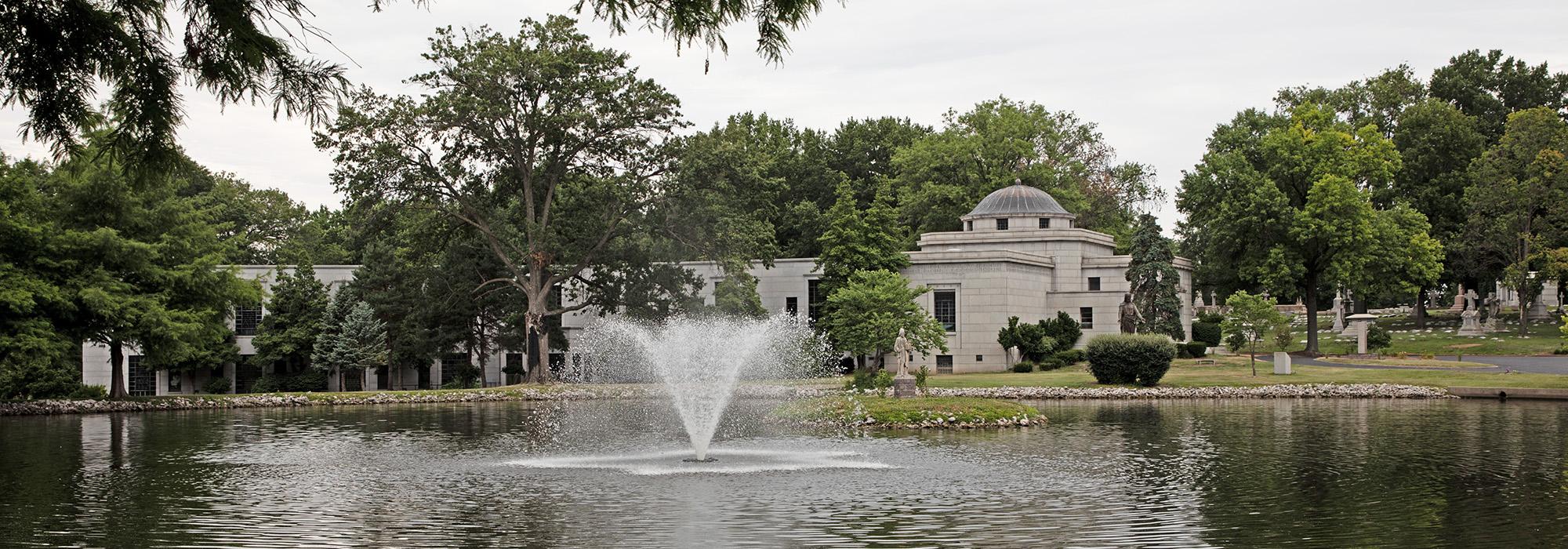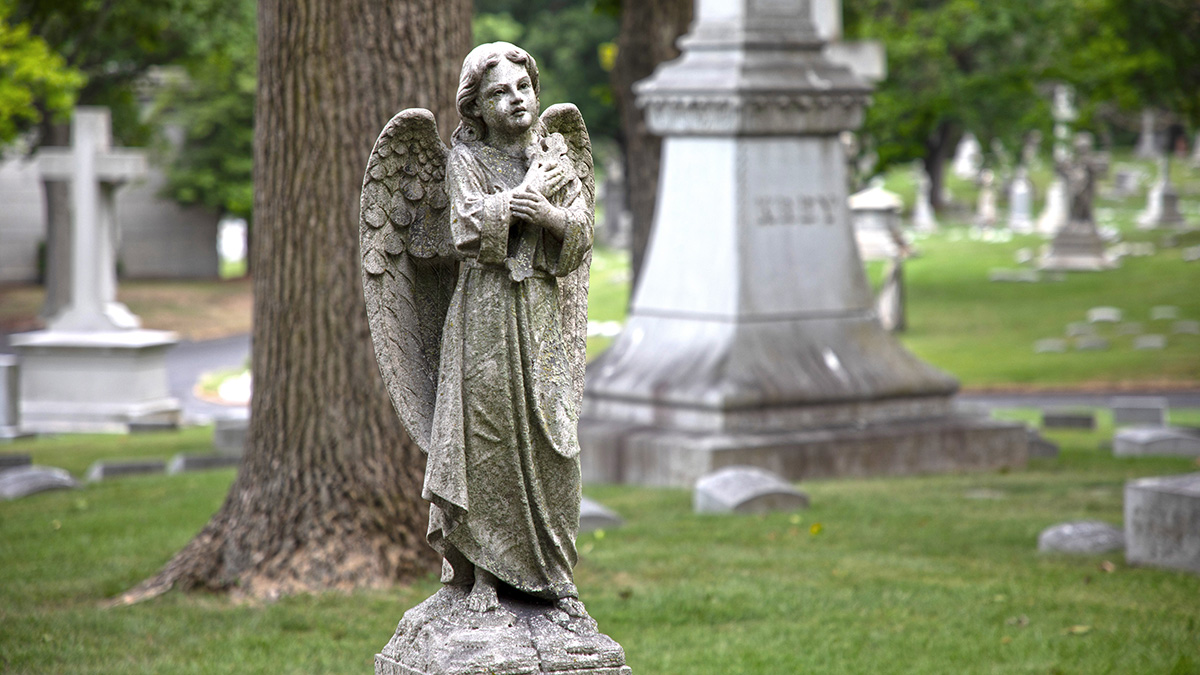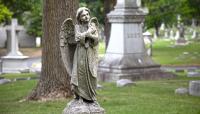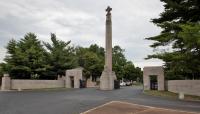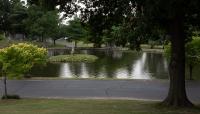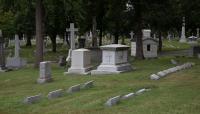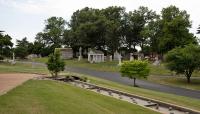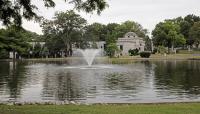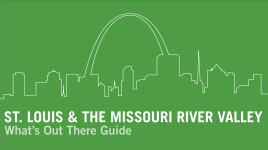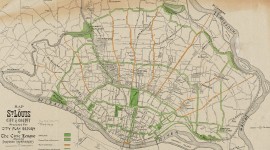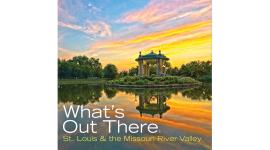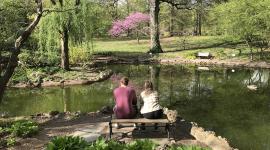Landscape Information
In 1853, Archbishop Peter Richard Kendrick purchased 323 acres of land from Senator Henry Clay to establish Calvary Cemetery. Over the years, management acquired adjacent parcels and expanded the grounds to comprise 470 acres of terrain. The cemetery is bounded by pressed-spear metal fencing along West Florissant Avenue, Calvary Avenue, an industrial rail line, and Riverview Boulevard. Sited on bluffs overlooking the Mississippi River, the topography forms a crest that opens towards the river, with its highest point 90 feet above the lowest. Beginning soon after the cemetery’s establishment, some burials from other Catholic cemeteries and burial grounds in St. Louis were reinterred at Calvary, which would become the final resting place for more than 300,000 individuals. Most graves are marked by traditional monuments and lawn-level markers. The arrangements of the graves run in a patchwork of grids that are roughly parallel to the curvilinear roads. The cemetery contains several notable mausoleums, including the All Saints Community Mausoleum, Shrine Community Mausoleum, and the Kern Mausoleum. These represent a variety of architectural movements including Neoclassical, Gothic Revival and Beaux-Arts. The landscape primarily consists of turf lawn and large shade trees, and the northern corner features the only remnant prairie in St. Louis. In the 1990s, biologists discovered this 25-acre plot located in the northern corner of the cemetery, which persisted through farming and development pressures following European settlement. The tract of land has been set aside for conservation and restoration in partnership with the Missouri Department of Conservation, with efforts including reseeding, controlled burns and spot-spraying invasive species. Some notable people buried here include Dred Scott, Madame Pelagie Rutgers, Kate Chopin, Tennessee Williams, and William Tecumseh Sherman.



